Destroying Angel / Summer / Autumn / Deadly poisonous
Enter with caution into the shadowed realm of the Destroying Angel (Amanita virosa), an innocently beautiful mushroom concealing a deadly secret.
Join us on a somber journey as we shed light on this treacherous fungus, known for its potent toxicity.
With its ethereal appearance and seemingly harmless presence, the Destroying Angel poses a grave threat to unsuspecting foragers and mushroom enthusiasts. Uncover the distinctive features that betray its lethal nature, delve into the hazardous toxins it contains, and understand the devastating consequences of accidental ingestion. Through this knowledge, we aim to protect and educate, arming you with the understanding needed to navigate the natural world’s dangerous corners.
Brace yourself as we unveil the truth behind the Destroying Angel, a reminder of the ever-present need for caution, vigilance, and respect for the mysteries nature holds.
Common Name
Destroying Angel
Botanical Name
Amanita virosa
Meaning of Botanical Name
Virosa refers to its strongly sweet sickly unpleasant smell
Family
Amanitaceae
Known Hazards
DEADLY! This mushroom contains amatoxin, which in the first 6-12 hours after eating cause severe gastric upsets. Those symptoms pass and the consumer is fine until day 3-4 when severe liver and kidney damage has been done…which leads to coma and death.
Could be confused with
The False Death Cap (Amanita Citrina) this mushroom smells strongly of raw potato and often has veil ( egg sack) remnants on the cap.
Field mushrooms (Agaricus Campestris) These mushrooms have pink to brown black gills not white and don’t have a bulbous base or egg sac remnants at the base of the stem
Food Plant of…
Some small mammals rabbits and squirrels have been seen to eat this mushroom with no apparent ill effects. Though it remains unclear whther they were really OK days later.
Range and Distribution
The Destroying Angel is an uncommon mushroom preferring altitude in Britain and Ireland. It can be found in lower areas especially in Scotland, it can also be found in Europe especially the coniferous woodlands of Scandinavia.
Habitat
Often found at the edges of woodlands preferring deciduous woodlands.
Physical Characteristics
Volva
Like all Amanitas, this mushroom grows from a volva (egg sack)
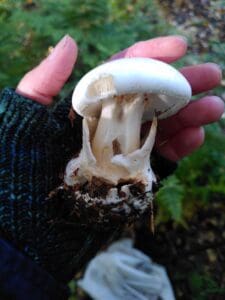
Cap
The cap is pure white quite satin like when dry and viscus (slimy) when wet. Dome shaped when young and flattening with age, often has an umbo (lump)in the centre of the cap as it expands.
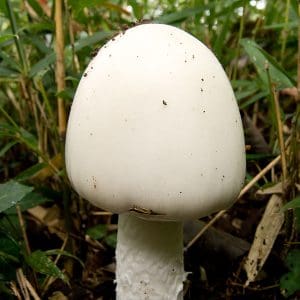
Gills
The gills are crowded and white, they are adnexed (narrowly joined to the stem)
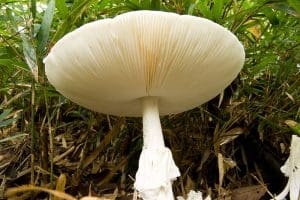
Stem & Skirt
The tall stem is pure white and fibrous, hollowing with age, there is a fragile ring on the upper part of the stem but it often disappears
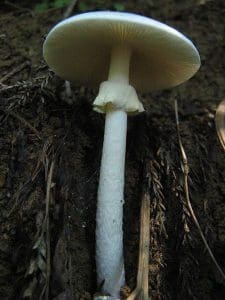
Smell
Unpleasant sickly odour
Edible Use
None- Do Not Eat This Mushroom!




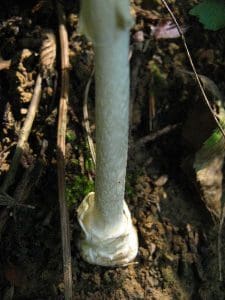



1 reply on “Destroying Angel (Amanita virosa) Identification”